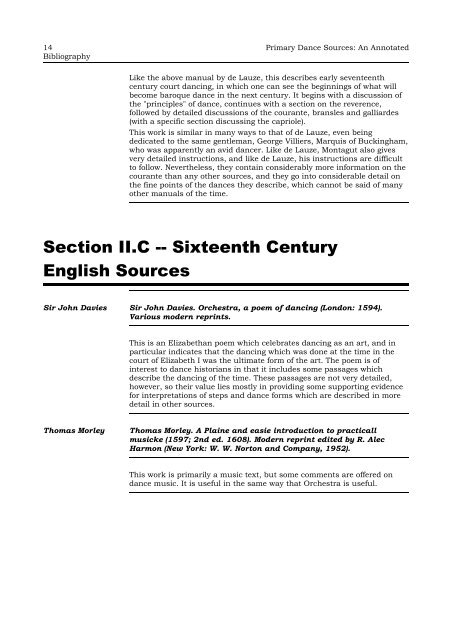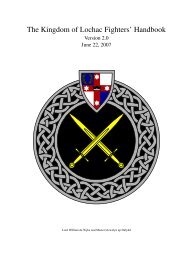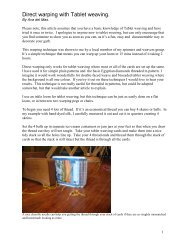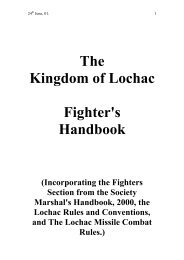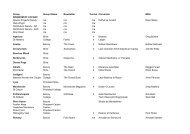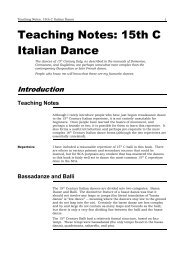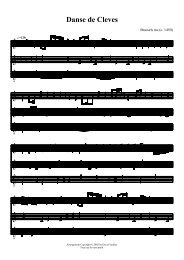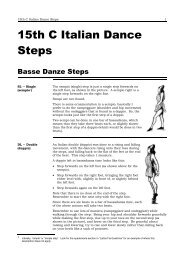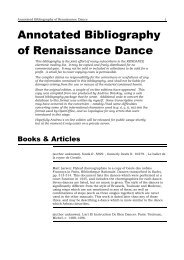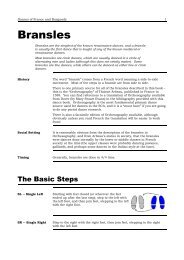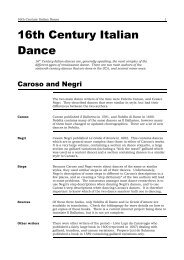Primary Dance Sources: An Annotated Bibliography
Primary Dance Sources: An Annotated Bibliography
Primary Dance Sources: An Annotated Bibliography
You also want an ePaper? Increase the reach of your titles
YUMPU automatically turns print PDFs into web optimized ePapers that Google loves.
14 <strong>Primary</strong> <strong>Dance</strong> <strong>Sources</strong>: <strong>An</strong> <strong>An</strong>notated<br />
<strong>Bibliography</strong><br />
Like the above manual by de Lauze, this describes early seventeenth<br />
century court dancing, in which one can see the beginnings of what will<br />
become baroque dance in the next century. It begins with a discussion of<br />
the "principles" of dance, continues with a section on the reverence,<br />
followed by detailed discussions of the courante, bransles and galliardes<br />
(with a specific section discussing the capriole).<br />
This work is similar in many ways to that of de Lauze, even being<br />
dedicated to the same gentleman, George Villiers, Marquis of Buckingham,<br />
who was apparently an avid dancer. Like de Lauze, Montagut also gives<br />
very detailed instructions, and like de Lauze, his instructions are difficult<br />
to follow. Nevertheless, they contain considerably more information on the<br />
courante than any other sources, and they go into considerable detail on<br />
the fine points of the dances they describe, which cannot be said of many<br />
other manuals of the time.<br />
Section II.C -- Sixteenth Century<br />
English <strong>Sources</strong><br />
Sir John Davies Sir John Davies. Orchestra, a poem of dancing (London: 1594).<br />
Various modern reprints.<br />
This is an Elizabethan poem which celebrates dancing as an art, and in<br />
particular indicates that the dancing which was done at the time in the<br />
court of Elizabeth I was the ultimate form of the art. The poem is of<br />
interest to dance historians in that it includes some passages which<br />
describe the dancing of the time. These passages are not very detailed,<br />
however, so their value lies mostly in providing some supporting evidence<br />
for interpretations of steps and dance forms which are described in more<br />
detail in other sources.<br />
Thomas Morley<br />
Thomas Morley. A Plaine and easie introduction to practicall<br />
musicke (1597; 2nd ed. 1608). Modern reprint edited by R. Alec<br />
Harmon (New York: W. W. Norton and Company, 1952).<br />
This work is primarily a music text, but some comments are offered on<br />
dance music. It is useful in the same way that Orchestra is useful.


